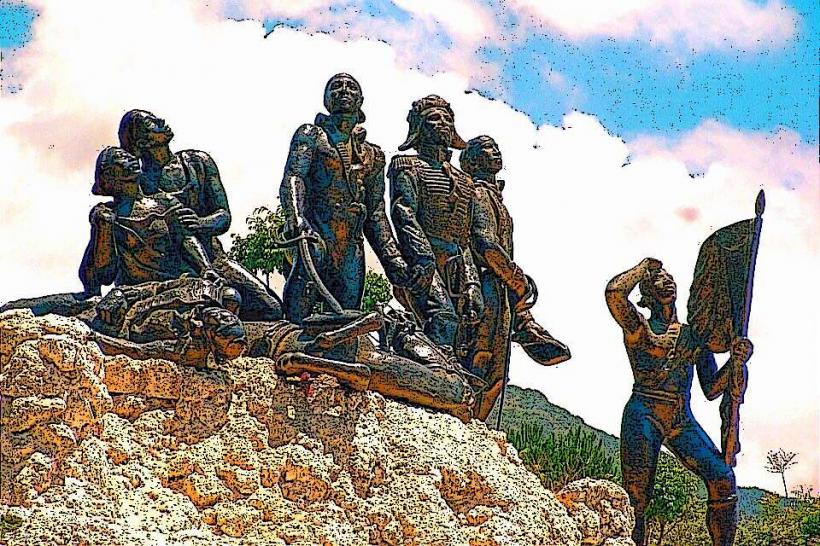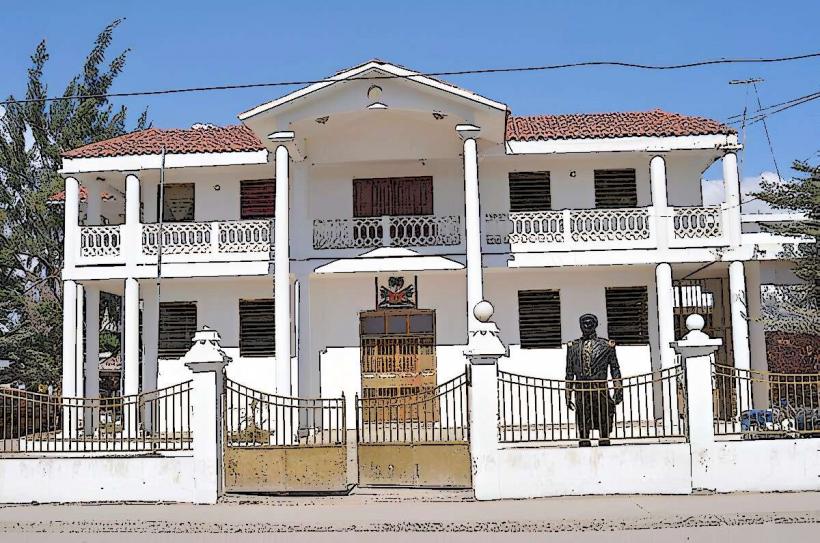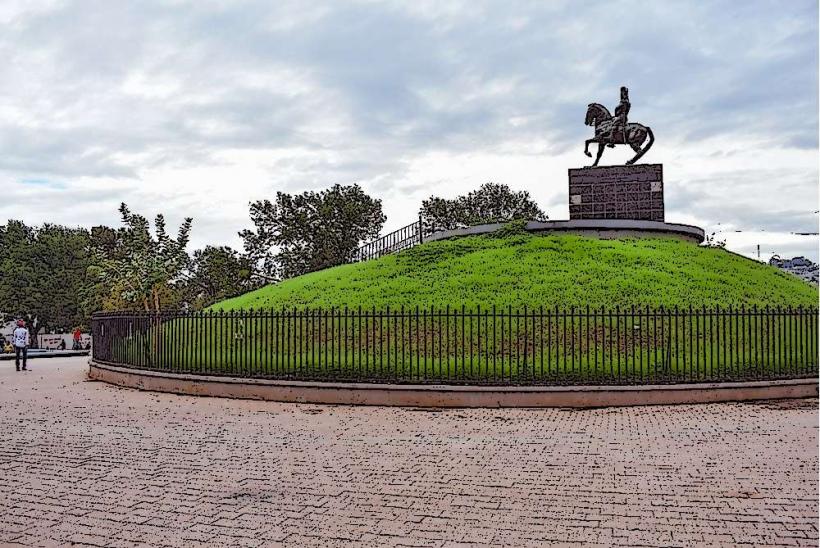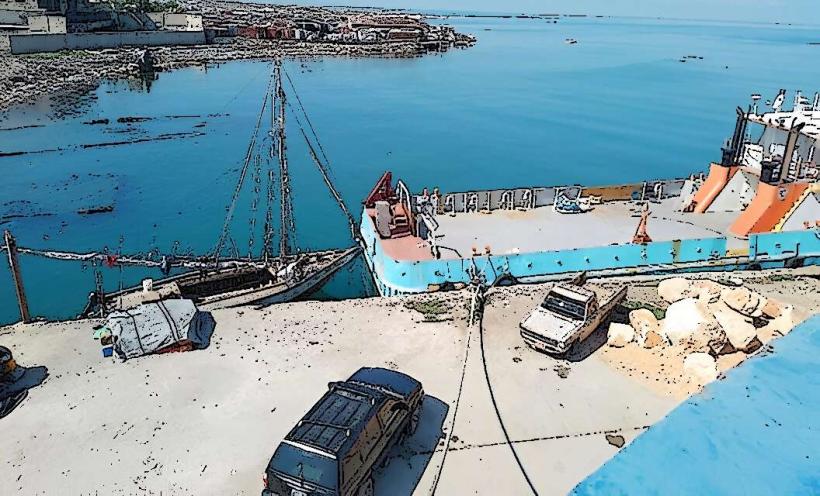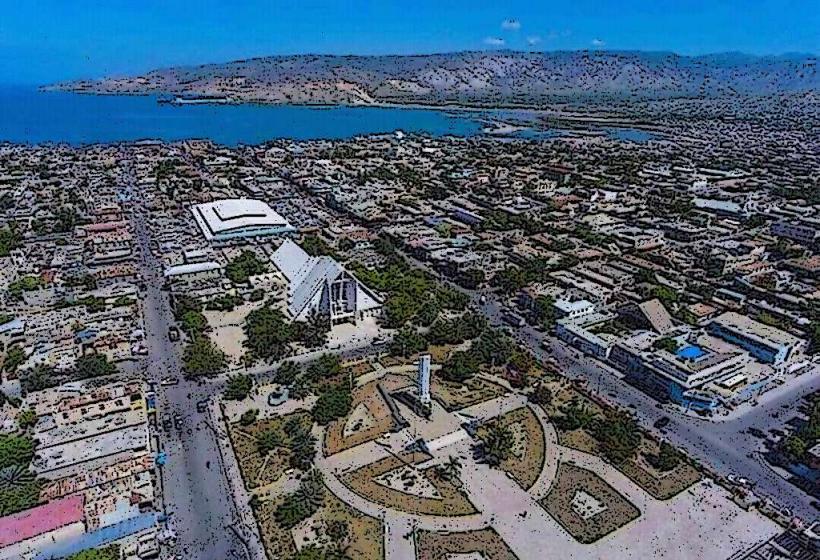Information
Landmark: Independence MonumentCity: Gonaives
Country: Haiti
Continent: North America
The Independence Monument in Gonaïves is a significant historical landmark located in Gonaïves, Haiti, a city that played a central role in the country’s fight for freedom and independence. This monument stands as a tribute to Haiti’s struggle for independence and is particularly important as the site where Haiti’s independence was declared in 1804.
Overview
1. Location
- The Independence Monument is located in the city center of Gonaïves, which is situated in the Artibonite Department of Haiti. It is a prominent feature of the city and is an essential destination for those wishing to learn more about Haiti’s revolutionary history.
2. Historical Significance
- Gonaïves is often referred to as the "City of Independence" because it is in this city that Jean-Jacques Dessalines, a leader of the Haitian Revolution, declared Haiti’s independence from France on January 1, 1804.
- The Independence Monument commemorates the pivotal moment in Haitian history when the Haitian Revolution led to the creation of the first independent black republic in the world, following the defeat of French colonial forces.
Design and Features
1. Monument Structure
- The Independence Monument in Gonaïves is designed to symbolize Haiti’s liberation and the sacrifices made by the Haitian people during the revolution. The monument often takes the form of an obelisk or column, a common design for victory memorials around the world. It serves as a prominent visual marker of Haiti’s freedom and sovereignty.
- At the base of the monument, there may be inscriptions, plaques, or statues that honor key figures of the Haitian Revolution, especially Jean-Jacques Dessalines, who declared Haiti's independence. The design elements are meant to reflect resilience, victory, and the nation’s enduring pride.
2. Symbolism
- The monument is a symbol of the end of slavery and the establishment of Haiti as an independent nation. It represents not only Haiti’s physical liberation from colonial rule but also its commitment to the principles of equality, freedom, and self-determination.
- The Independence Monument is a central symbol of national pride and is a site of reflection for Haitians, both as a memorial and as an ongoing celebration of Haiti’s revolutionary achievements.
Cultural and Social Importance
1. Independence Day Celebrations
- The Independence Monument in Gonaïves holds particular significance on January 1, Haiti's Independence Day. On this day, the city of Gonaïves comes alive with national events, parades, and public ceremonies that commemorate the declaration of Haiti’s independence in 1804.
- Gonaïves is often the focal point of these celebrations, with ceremonies held at the monument to honor the heroes of the Haitian Revolution and remember the country’s historic victory over colonial powers.
2. National Identity
- The Independence Monument is more than just a physical structure; it is a symbol of Haitian resilience and national identity. It reminds both Haitians and visitors of the country’s struggle for freedom and the ideals of justice and equality that were central to the Haitian Revolution.
- The monument is frequently visited by locals, tourists, and dignitaries, especially during significant national holidays, making it a place where Haitian history is remembered and celebrated.
Tourism and Visitor Experience
1. Historical Significance
- Visitors to the Independence Monument can learn about the Haitian Revolution, the key figures involved, and the significance of Gonaïves as the site where Haiti declared its independence. The area around the monument is often marked with interpretive plaques or tour guides offering educational insights into the history of Haiti’s revolution.
- Gonaïves is also home to several other historical landmarks related to Haiti’s fight for independence, making it an important stop for history enthusiasts.
2. Local Events
- Apart from national celebrations, the Independence Monument hosts various public events, including local gatherings, speeches, and exhibitions that reflect Haitian culture and the spirit of independence. It is a place of gathering for Haitians to express national pride and reaffirm the legacy of the revolution.
Nearby Attractions
- Gonaïves itself is a city with a rich history and is closely associated with Haiti's revolutionary past. Other nearby attractions include:
- Citadelle Laferrière: A UNESCO World Heritage site and one of the largest fortresses in the Americas, it symbolizes the military strength of Haiti following its independence.
- Sans-Souci Palace: Another UNESCO World Heritage site, the palace was the residence of King Henri Christophe, one of the leaders of the Haitian Revolution.
- Plaine du Cul-de-Sac: A region nearby that was crucial in the early stages of the Haitian Revolution, where some of the most important battles for freedom took place.
Practical Information
1. Getting There
- By Car: Gonaïves is accessible by car from Port-au-Prince, the capital, which is about 150 kilometers away. The drive typically takes 3-4 hours, depending on road conditions.
- By Public Transport: Tap-taps (shared minibuses) are commonly used to travel to Gonaïves from other parts of Haiti. Local buses also connect Gonaïves with the rest of the country.
2. Best Time to Visit
- The dry season (from November to March) is the best time to visit Gonaïves, as the weather is more pleasant for outdoor exploration.
- January 1 (Independence Day) is a particularly significant time to visit, as the city and monument come alive with celebrations and events marking Haiti’s independence.
3. Nearby Amenities
- Local Markets: Gonaïves is home to vibrant markets where visitors can purchase local crafts, souvenirs, and Haitian goods.
- Restaurants: Visitors can enjoy traditional Haitian dishes such as griot, poulet en sauce, and diri ak pwa at local eateries.
Conclusion
The Independence Monument in Gonaïves is a vital symbol of Haiti's history and a significant site for national pride. It marks the place where Haiti’s independence was officially declared, making it an essential landmark in the story of the Haitian Revolution. For Haitians and visitors alike, the monument serves as a reminder of the nation’s struggle for freedom, its revolutionary heroes, and the ongoing legacy of independence that shapes Haiti today.

